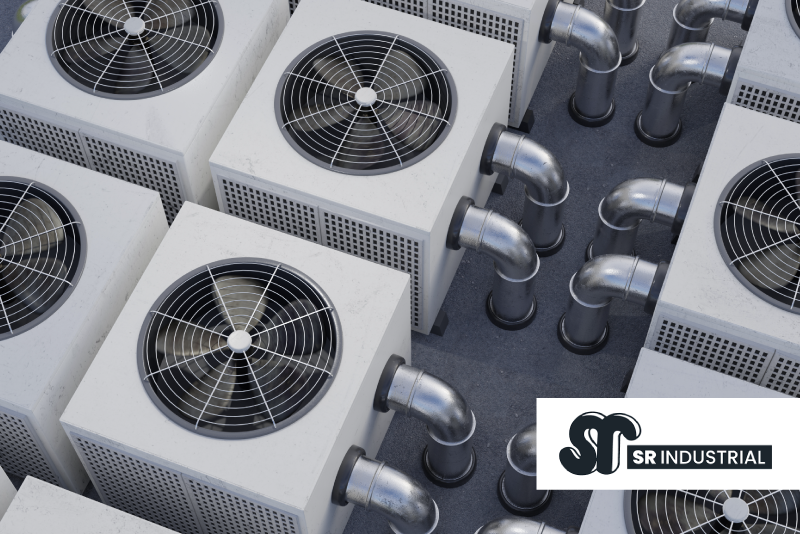Exploring Commercial Heating Systems: Types and Benefits

Welcome to the world of commercial heating systems and commercial boilers, where reliable and efficient heating is crucial for creating a comfortable environment for employees, customers, and clients. In this article, we will delve into the various types of commercial heating systems and explore their benefits.
Whether you’re a business owner, property manager, or HVAC professional, understanding these systems will empower you to make informed decisions about your heating needs.
Understanding Commercial Heating Systems
Commercial heating systems are designed to provide warmth and comfort in large-scale buildings, such as offices, factories, retail stores, and educational institutions. These systems consist of key components that work together to distribute heat effectively and efficiently throughout the building.
Types of Commercial Heating Systems
Forced Air Systems
One of the most common types of commercial heating systems is the forced air system. These systems use ductwork to distribute heated air throughout the building. The heat is generated by a furnace or heat pump and is then blown through the ducts into various rooms and areas.
How Forced Air Systems Work
Forced air systems work by pulling in cold air from the building, heating it in the furnace or heat pump, and then distributing the warm air through the ductwork. The air is filtered and can be adjusted to achieve the desired temperature using a thermostat.
Benefits of Forced Air Systems
Forced air systems offer several benefits. Firstly, they provide quick and even heating, ensuring a comfortable environment in a short amount of time. Additionally, forced air systems can incorporate air conditioning, providing both heating and cooling capabilities. They are also relatively cost-effective and allow for easy installation and maintenance.
Radiant Heating Systems
Radiant heating systems work by transferring heat directly to objects and people in the room, rather than relying on the circulation of air. These systems can be installed in the floor, walls, or ceilings and use various heat sources, such as boilers or electric resistance elements.
How Radiant Heating Systems Work
Radiant heating systems emit infrared radiation, which warms up objects and individuals in the room. The warmth is absorbed by the surrounding surfaces and then released into the air, creating a comfortable and consistent heat distribution.
Benefits of Radiant Heating Systems
Radiant heating systems offer several advantages. Firstly, they provide consistent and comfortable heating, as the heat is distributed evenly throughout the space. They are also energy-efficient, as they eliminate heat loss through ductwork. Additionally, radiant heating systems are silent and provide a clean aesthetic, as there are no visible heating units or vents.
Hydronic Systems
Hydronic heating systems, also known as water-based heating systems, use heated water or steam to distribute warmth throughout the building. These systems employ boilers or water heaters to heat the water, which is then circulated through pipes and radiators or underfloor heating systems.
How Hydronic Systems Work
Hydronic systems operate by heating water or steam in a boiler or water heater. The heated water is then pumped through a network of pipes to radiators or underfloor heating systems. The heat is released into the air, providing a comfortable indoor environment.
Benefits of Hydronic Systems
Hydronic systems offer several benefits. Firstly, they provide efficient and even heating, as water can retain heat for longer periods compared to air. These systems can also be zoned, allowing for individual temperature control in different areas of the building. Hydronic systems are known for their quiet operation and can be combined with other energy sources, such as solar panels, to enhance their efficiency.
Steam Systems
Steam heating systems were widely used in older commercial buildings and are still found in certain industries today. These systems utilise boilers to generate.
How Steam Systems Work
Steam systems generate heat by boiling water in a boiler, producing steam under high pressure. The steam then travels through pipes and radiators, releasing heat into the surrounding air. As the steam cools down, it condenses back into water and returns to the boiler to be reheated.
Benefits of Steam Systems
Steam systems offer several advantages. Firstly, they provide consistent and reliable heating, as steam can distribute heat evenly throughout the building. These systems are also known for their durability and longevity, as they have been used for many years in various industries. Additionally, steam systems can be easily modified and expanded to accommodate changes in the building’s heating requirements.
Factors to Consider When Choosing a Commercial Heating System
Now that we have explored the different types of commercial heating systems and their benefits, it’s essential to consider several factors before selecting the most suitable system for your commercial space.
Building Size and Layout
The size and layout of your building play a crucial role in determining the type of heating system you should choose. Larger buildings may require more powerful systems, such as forced air or hydronic systems, to ensure efficient and adequate heating throughout the space. Smaller buildings or spaces with specific heating requirements may benefit from radiant heating systems.
Energy Efficiency
Energy efficiency is a significant consideration when selecting a commercial heating system. Look for systems that have high energy efficiency ratings and are designed to minimise heat loss. This will not only reduce your carbon footprint but also lead to substantial cost savings in the long run.
Maintenance and Service
Regular maintenance and servicing are essential for keeping your commercial heating system in optimal condition. Consider the availability of service providers and the ease of maintenance for each type of system. Some systems may require more frequent maintenance or specialised expertise, which should be factored into your decision-making process.
Cost Considerations
Cost is a crucial factor for any business decision. Evaluate the upfront costs of purchasing and installing the heating system, as well as the long-term operating costs, including energy consumption and maintenance. It’s important to strike a balance between affordability and performance to ensure the system meets your budgetary requirements while delivering the desired heating capabilities.
Benefits of Commercial Heating Systems
Comfortable Indoor Environment
Commercial heating systems provide a comfortable indoor environment, promoting productivity and well-being among employees, customers, and clients. By maintaining a consistent and pleasant temperature, these systems create a welcoming atmosphere that supports business activities.
Energy Efficiency and Cost Savings
Investing in an energy-efficient commercial heating system can lead to significant cost savings. Systems that are designed to minimise energy consumption help reduce utility bills while minimising environmental impact. Additionally, some heating systems, such as hydronic systems, allow for zone control, enabling you to adjust the temperature in different areas of the building based on occupancy or specific heating needs.
Enhanced Control and Zoning
Commercial heating systems offer enhanced control and zoning capabilities, allowing you to tailor the heating settings to different areas of the building. This ensures optimal comfort while optimising energy usage. Zoning enables you to prioritise heating in occupied spaces and reduce energy consumption in unoccupied or lesser-used areas.
Longevity and Durability
Commercial heating systems are built to withstand the demands of large-scale buildings and frequent usage. Investing in a high-quality system, along with regular maintenance, can extend its lifespan, ensuring reliable heating for years to come. The durability of these systems minimises the need for frequent replacements, saving both time and money.


